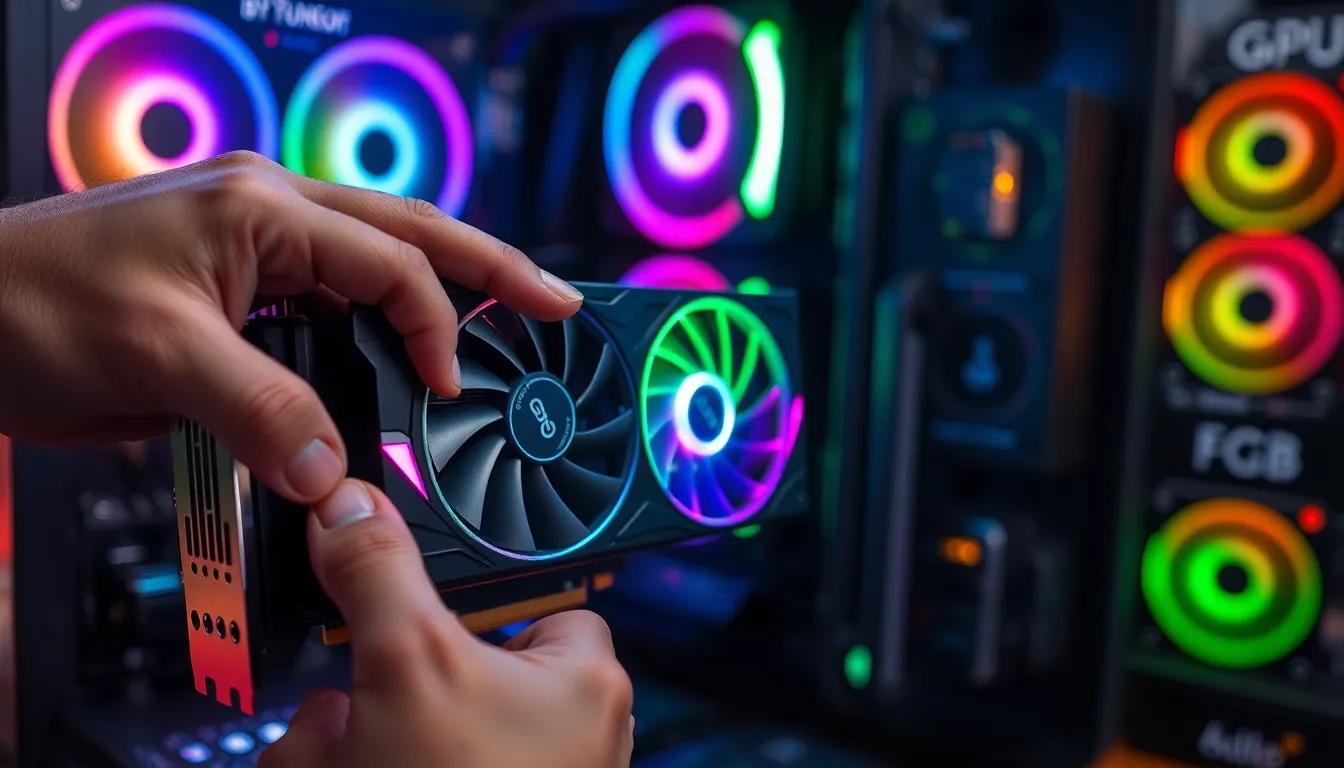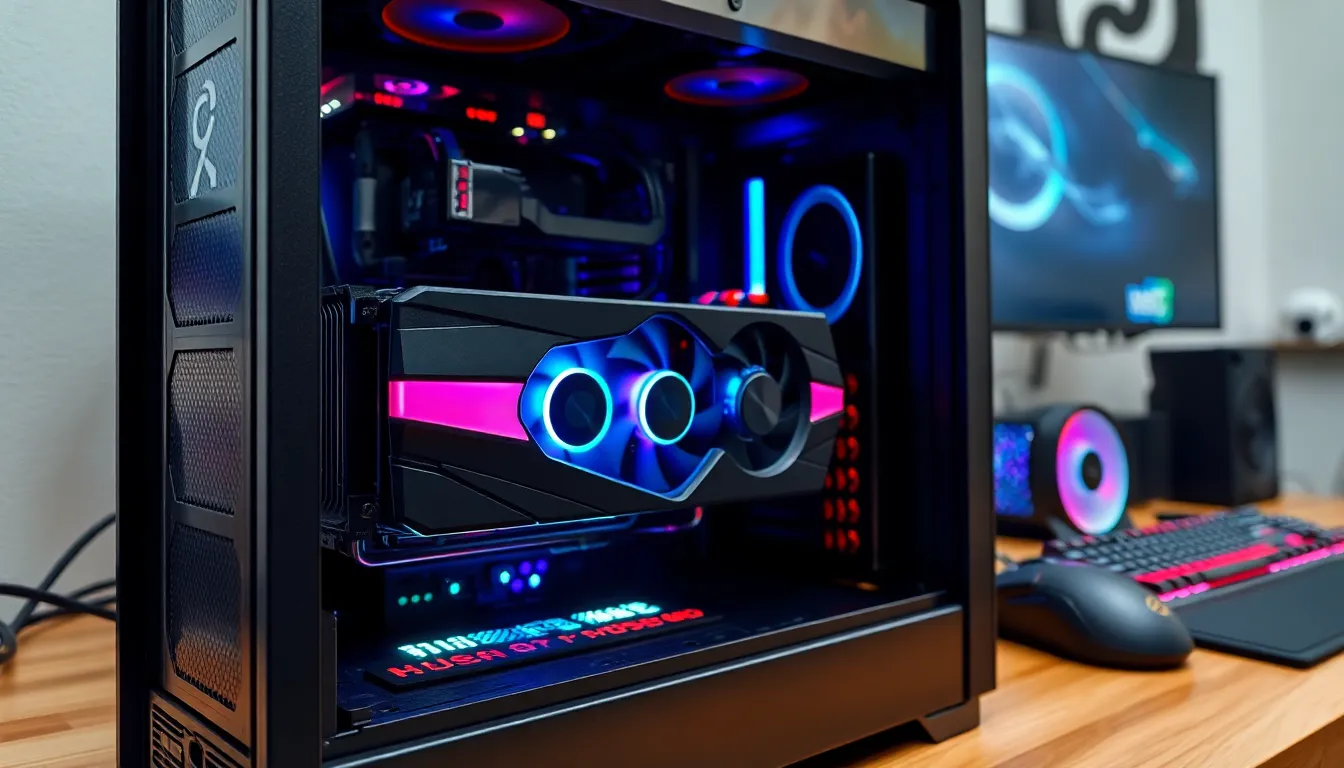In the world of gaming and graphics, a powerful GPU is like a knight in shining armor. But even the mightiest knight needs a little help to unleash its full potential. Enter GPU tuning software—the secret weapon that transforms a good graphics card into a legendary one. With just a few clicks, users can tweak, tune, and fine-tune their GPUs to achieve peak performance.
Table of Contents
ToggleOverview of GPU Tuning Software
GPU tuning software enhances performance by allowing users to optimize their graphics cards for gaming and graphics applications. This software provides tools for adjusting settings that maximize performance with minimal effort.
What Is GPU Tuning Software?
GPU tuning software is a specialized application designed to adjust parameters like clock speeds, voltage, and fan speeds of graphics cards. Many users employ these tools to extract enhanced performance and ensure stability during demanding tasks. These applications often feature user-friendly interfaces, making the tuning process accessible for both beginners and experienced users. Examples of popular GPU tuning software include MSI Afterburner and EVGA Precision X1.
Importance of GPU Tuning
GPU tuning plays a crucial role in optimizing system performance. Adjusting settings can lead to significant improvements in frame rates, responsiveness, and overall gaming experience. Enhanced cooling options keep temperatures down, expanding the component’s lifespan. Energy efficiency becomes an additional benefit, as well-tuned GPUs consume less power while delivering better performance. Many gamers and professionals rely on tuning to meet the specific demands of their applications or games.
Key Features of GPU Tuning Software

GPU tuning software offers essential tools for maximizing graphical performance and stability. Users can easily adjust various parameters, ensuring optimal efficiency tailored to their specific needs.
Performance Optimization Tools
Performance optimization tools allow adjustments to key settings like clock speeds and voltages. Increasing clock speeds can significantly enhance frame rates during intense gaming sessions. Users can also tweak memory timings for improved bandwidth, which translates to faster data processing. Enhanced fan speed control aids in effective cooling, minimizing thermal throttling during demanding tasks. This versatility helps in achieving a perfect balance between performance and noise levels.
Monitoring and Benchmarking Capabilities
Monitoring features provide real-time insights into GPU performance metrics. Users can track temperatures, usage percentages, and power consumption, ensuring everything runs smoothly. Benchmarking capabilities often allow users to compare their hardware’s performance against standardized tests. Identifying bottlenecks becomes simpler, guiding users on necessary adjustments. Accurate monitoring and benchmarking tools ensure all components function within optimal ranges, enhancing overall stability during demanding applications.
User Interface and Usability
User interfaces in GPU tuning software typically focus on simplicity and accessibility. Intuitive designs cater to both novices and experienced users, making navigation straightforward. Customizable layouts often enhance user experience, allowing individuals to access frequently used features quickly. Many tools offer built-in presets for common configurations, simplifying the tuning process further. A clear, user-friendly interface ensures users achieve optimal performance without feeling overwhelmed.
Popular GPU Tuning Software
Several GPU tuning software options stand out, offering unique features to optimize graphics performance. Each application caters to different user preferences and hardware.
MSI Afterburner
MSI Afterburner serves as a premier choice among gamers and professionals. This software provides robust features for tweaking clock speeds and voltages, leading to improved frame rates. Real-time hardware monitoring adds another layer of functionality, allowing users to track performance metrics during intense sessions. Compatibility with a wide range of graphics cards enhances its appeal. Customizable profiles also enable users to switch settings effortlessly based on game requirements.
EVGA Precision X1
EVGA Precision X1 excels in providing a user-friendly interface for easier adjustments. This software supports the latest NVIDIA graphics cards with features like adjustable RGB lighting and precise clock speed controls. Performance monitoring helps identify optimal settings in real-time. Built-in overclocking utilities facilitate seamless performance enhancement without extensive technical knowledge. Additionally, its Easy Overclocking feature allows novice users to maximize their GPU potential quickly.
ASUS GPU Tweak II
ASUS GPU Tweak II offers a comprehensive toolset for fine-tuning graphics performance. Custom tuning options allow experienced users to adjust clock speeds and fan profiles. Its intuitive interface simplifies the process for beginners, making the software accessible to a wider audience. Monitoring performance in real-time proves invaluable during demanding gaming sessions, where overheating can be a concern. The built-in profiles enhance versatility, allowing quick adjustments tailored to specific games or applications.
Best Practices for Using GPU Tuning Software
Using GPU tuning software effectively involves following best practices to ensure optimal performance while maintaining hardware safety. Adopting safe strategies leads to improved gaming experiences and productivity.
Setting Safe Overclocking Limits
Establishing safe overclocking limits is crucial for protecting hardware. Users should gradually increase clock speeds and monitor system responses during adjustments. Starting with small increments allows for better observation of performance changes. Each modification should be followed by stability tests to confirm system reliability. Tools integrated into the software usually provide benchmark options to assess these limits. Understanding manufacturer specifications contributes to selecting suitable parameters. Regular documentation of changes can help pinpoint successful settings and pitfalls. Adhering to these practices keeps the GPU within a safe performance range and prolongs its lifespan.
Monitoring Temperatures and Stability
Monitoring temperatures and stability is essential in GPU tuning. Real-time metrics allow users to avoid overheating. Many software options include built-in monitoring tools that display temperature trends and usage stats. Observations during intense tasks, like gaming or rendering, highlight if adjustments compromise stability. When temperatures exceed safe limits, users can react promptly to prevent damage. Systematic testing after each tuning adjustment helps ensure overall GPU reliability. Fans may need to be tweaked or additional cooling solutions can be implemented based on these findings. Tracking thermal performance fosters a balanced approach to achieving peak GPU efficiency without risking hardware integrity.
GPU tuning software is essential for anyone looking to maximize their graphics card’s potential. By allowing users to tweak parameters like clock speeds and voltages, these tools enhance performance and stability during demanding tasks. With options like MSI Afterburner and EVGA Precision X1, users can easily find the right fit for their needs.
The benefits of tuning extend beyond performance improvements. Properly optimized GPUs can lead to better energy efficiency and longer component lifespans. By following best practices and utilizing the right software, users can significantly elevate their gaming and graphics experiences. Embracing GPU tuning software is a smart move for both casual gamers and professionals alike.




